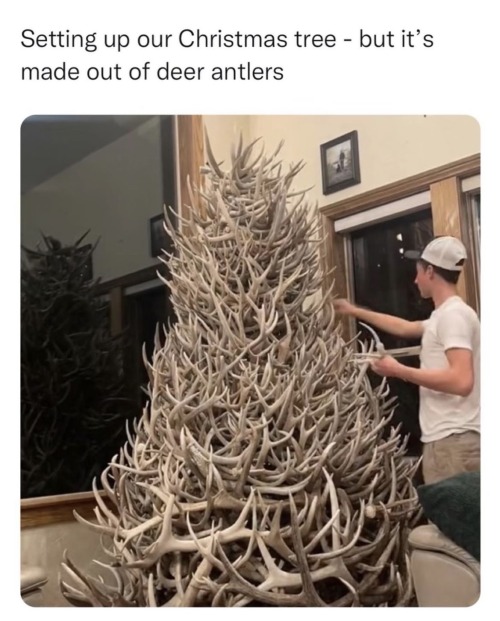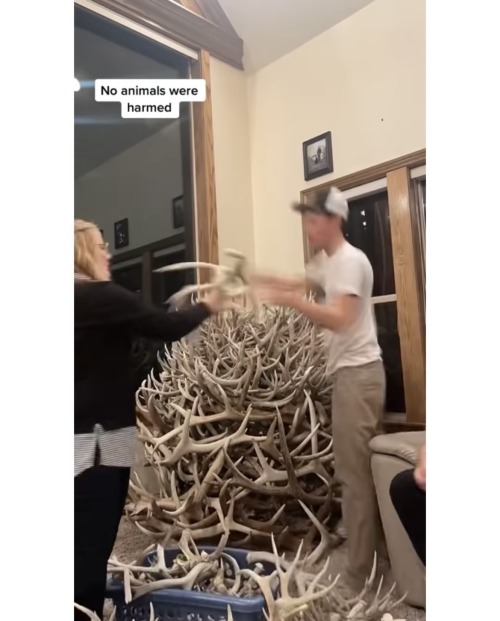I Really Don’t Like When Jokes Revolving Around Misinformation On An Obscure Or Niche Topic Don’t
I really don’t like when jokes revolving around misinformation on an obscure or niche topic don’t include a label to say it’s a joke. It’s gaslighting people or misinforming those who never read on the topic before.
More Posts from Enbylvania65000 and Others
This point cannot be emphasised enough. I would never have been able to make any grammar at all without doing things this way.
Constraints are an amazing tool that actually make you more creative. Instead of trying to give your language ALL OF THE FEATUREs, try putting more constraints on it.
They are also erasing Jewish history of Israel from before the foundation of the state, and en masse rewriting articles on Zionism and Jews in the Middle East, getting rid of any context that justifies Israel and sometimes adding conspiracy theories. Israeli right-wing sources are considered unreliable due to being propaganda (which they are, but they also sometimes tell the truth) yet Qatari outlets are considered completely okay to use despite many many instances of outright fabrication. They should either ban both or ban neither if they want consistency. I have to constantly go to archived revisions for almost any page relating to Israel's history. Even on the summary page of Israel itself, they erased the link to the "Land of Israel" but kept the "Holy Land" and "historic region of Palestine".
This kind of stuff was happening on other topics than Jews long before October 7th, and is due to an inherent issue in English Wikipedia's editing culture. I remember how the decision making process worked years ago in a debate about deadnaming; trans people were outright ignored not just by transphobes but by "allies" because anyone with a personal stake in an issue is viewed as untrustworthy. Rules are made by consensus, which isn't a terrible idea on its own - but key part of how consensus is built is to marginalise the very people affected. I know from a friend this is also how Wikipedia operates on Romani issues.
I love the *idea* of Wikipedia so much, but the editing culture there is really toxic.
Another Jew on here commented that people were going onto Wikipedia and removing references to certain people's Jewishness, and I just saw for myself that this is true. As a Jew and a fan of old movies and history, I was looking up a list of Jewish actors on Wikipedia. I saw Tina Louise (you know, from Gilligan's Island) pop up. So I popped over to her actual page on Wikipedia. And there were zero references to her being Jewish. So I hopped on over to the Wayback Machine (bless you, Internet Archive) and put in the URL for her Wikipedia page. And wouldn't ya know it: before 10/7, there were at least 3 to 5 references to her Jewishness at any given time on her Wikipedia page. Wtf is happening.


open family and abuse
Guys, please be aware that there are some people in the consanguinamory community or on incest forums who might throw around words like “open family” as code for abusive behaviours involving the abuse of minors. Grooming is abuse. The concept of “open family” often implies grooming, whether these people admit it or not. This topic needs to be addressed sometime more properly, but for now, please be aware. Open family is a code word used by these very sick individuals, just like the term “MAP”.
Consanguinamory allies do not support grooming.
The Late Rodentocene: 20 million years post-establishment

Bats All, Folks: The Ratbats
The absence of birds as airborne competition has greatly encouraged the development of powered flight in the gliding kiterats of the Middle Rodentocene. As of the Late Rodentocene, these flying hamsters have expanded in great success, and their ability to fly has allowed them to colonize every continent, and by 20 million years PE, over a thousand species of ratbats are extant, filling nearly every niche imaginable.
Many of the more primitive and basal forms are insectivores, adapted for catching bugs midair. Some larger species of the basal lineages have become hawk-like predators, such as the wingsels (Mustelovolaticus spp.), which specialize on small, ground-dwelling prey such as jerryboas and furbils.
However, others have diverged into new and unusual behavioral niches as they became increasingly specialized into other lifestyles. Some, such as the nightflyers (Noctinyctomys spp.) retain their insectivorous diet, but instead avoid competition with their other relatives by being most active at night and Beta-twilight, feasting on the buffet of nocturnal insects. Others have included new supplements to their diet, such as the blue birbbat (Cyanoptera lagocephalus), which feeds mostly on insects but also includes nectar in its diet, its long bristly tongue adapted for probing bugs out of their nests also being surprisingly well-suited for penetrating flowers to reach its sweet prize, and acting as an important pollinator in the process.
The ratbats thrive in dense forest too, where smaller species take advantage of the abundance of seeds, fruit and insects in the treetops. Some, such as the nutcrackers (Pterosciurus spp.) feed mostly on seeds and fruit, which brings them into partial competition with the arboreal squizzels and spunkmunks: but one competition that they can also alleviate due to their ability to catch flying insects out of the reach of their non-flighted rivals. Others specialize on feeding on wood-boring insects, such as the woodchippers (Xyloclastes spp.), which gnaw through bark with their incisors to reach deep into trees to feed on burrowing grubs, and also take advantage of the sugary sap that flows when they chew on the inner wood.
And as larger creatures begin to evolve in the Late Rodentocene, some ratbats have become large-scale scavengers as well, such as the mountain hawckal (Cynopteramys alpinus), a condor-like scavenger that nests on clifftops and searches out carrion of cavybaras and bumbaas that have been left behind by ground-dwelling predators. With a wingspan of over six feet the hawckal is a less agile flyer, and instead soars for long distances riding on air currents to conserve energy.

But though they closely converge upon birds in flight and in niches, the ratbats are anatomically and behaviorally very different. For one, they are quadrupedal on the ground, running on all fours with their wings, which bear two clawed fingers possessing paw-like toe pads, and to take off they utilize a vaulting launch similar to that of pterosaurs, pushing up with their front limbs to launch themselves into the sky.
Like all mammals, ratbats give live birth and nurse their young on milk. As pregnancy adds extra weight and makes flying difficult, this favored the formation of pair bonds, allowing the male to forage for food while the expectant female stays in the nest, and once the young are born the responsibility of defending them goes to the father, with the mother foraging for food and returning only to nurse the young. In some species, communal nests of related individuals are formed, with multiple mated pairs caring for each others' young and cooperatively defending them until the young are weaned and strong enough to fly on their own.
▪▪▪▪▪▪▪▪▪▪
Today's Google Doodle was fun and informative, suggest everyone check it out.

bento’s garden follow me on twitter / instagram / patreon / shop / leave a tip



Regardless of what you think of this tree… this comment was my favourite out of the collection of people who didn’t know deer shed their antlers every spring
a few days ago a coworker asked me to explain Hanukkah and I asked her if she knew what a menorah was. She said, “like the Northern Lights?”
I’m simultaneously haunted by and wild about this concept now. instead of aurora borealis, menorah borealis. menorah borealis
SMH we Israelis blazed the trail for trans people in Eurovision and now people talking about the queer history of Eurovision either erase Dana International or refuse to mention what country she represented. It is clear that the international LGBT movement does not care for LGBT Israelis. The goy queer population of Europe came out to protest Israel at Eurovision for the temerity of *existing* but did not march in solidarity when LGBT Israelis protested against homophobia and transphobia in our government last year. I do not want to hear a single word about the importance of intersectionality or solidarity again from people who believe Jews and Israelis are exempt form either of them.

dana international 💕 israeli queer royalty 🇮🇱👸🏻
the first trans contestant and winner of eurovision !!!! 🇮🇱
The Late Rodentocene: 20 million years post-establishment

Full Boar Action: The Bumbaas
The bumbaas are descendants of the cavybaras that reigned in the Middle Rodentocene as the largest animals alive on the planet. Nowadays, such a distinction is gone, as other lineages continue to increase in size in the vacancy of niches: however, this particular branch of the family is still going strong, especially in the lineage of the bumbaas, adaptable omnivores that thrive throughout Ecatoria but also in Westerna and parts of Nodera too, as the cooling temperatures of the end of the Rodentocene once more resurface the land bridges which allowed new lineages to spread across the continents. And so the bumbaas spread and diversified in the different environments, foraging for grasses, shrubs, roots, fruit, invertebrates and carrion, on opportunistic occasions.
Aside from the desert bumbaa of the Great Ecatorian desert live a wide variety of other species. Other members of its genus, such as the forest bumbaa (Scrofacricetus matatai) are found elsewhere throughout Ecatoria, where, like their desert-dwelling cousin, are also avid part-time insectivores, supplementing their diet of grasses and roots with raiding insect nests: especially termites, whose mounds are abundant and a favorite of the bumbaas who break into the layers of hardened mud using their sharp tusks to access the juicy morsels within.
However, not all bumbaas closely resemble the members of this genus. Some, such as the meenypigs (Porcimys spp.) have become smaller and more slender, becoming tiny herbivores in the dense forests of Ecatoria much like mouse deer do. They feed primarily on mosses and lichens that grow on the forest floor and on the roots of trees and on logs, and with their smaller sizes prefer to run from enemies than fight them, thus favoring a build with longer legs and a leaner body.
But by far the most unusual member of the bumbaa family is the masked luchaboar (Tetracerodontomys venustafacies), a highly sexually-dimorphic species with a distinctive social system, and the only genus of bumbaa native to northern Nodera. Herds are comprised of a harem of up to a dozen females, their offspring, and a single dominant alpha male who stands out with his elaborate weaponry and brightly-colored facial markings that stand him out against the rest of the more drably-colored herd.
Most bumbaas sport only a single pair of tusks, on their lower jaw as extensions of their incisors. However, due to the constant wear and tear of abrasive vegetation on their teeth, the bumbaa's molars have also evolved to grow constantly, like their incisors, to deal with the continuous damage, and in male luchaboars the first pair of upper molars have become tusks as well: sporting a grand total of four. Males put these unusual teeth to good use, as they are fiercely territorial and aggressive: their brilliant facial markings serve as warning coloration to intimidate rivals, which they try to scare off by loud and threatening squeals, but more often than not results in a full-on wrestling match as the two males try to wrestle each other to the ground and jab each other with their tusks, which frequently results in bloody wounds and broken tusks, though as their tusks continually grow these damage is of little consequence as long as the root remains intact.
▪▪▪▪▪▪▪▪▪▪▪▪▪
